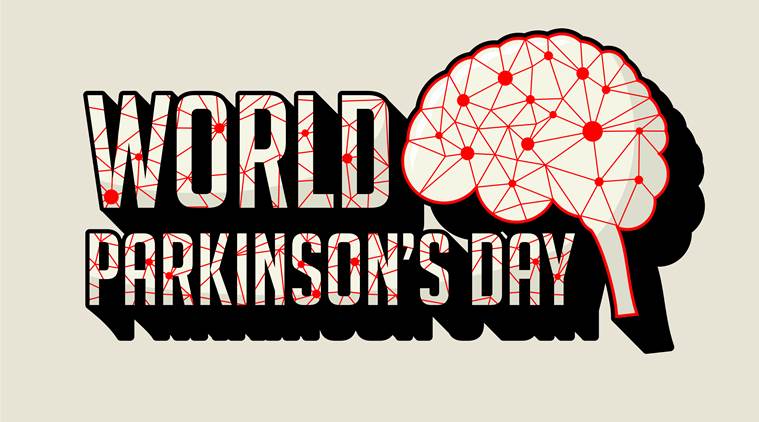As it is a progressive disorder, it needs regular following up with a movement disorder neurologist, who would fine-tune the medications depending on the condition of the patient on follow-up evaluation.

The month of April is considered to be Parkinson’s Awareness Month, and April 11 is the day when each year, communities from around the world come together to raise awareness about the neurodegenerative disorder.
According to Dr VP Singh, Chairman of the Institute of Neurosciences, Medanta, it’s the degeneration of dopamine producing cells in the brain that is responsible for the disorder. “Dopamine is the chemical that carries messages around the brain, and when its levels decrease, or not enough of it reaches the brain, patients develop features suggestive of Parkinson’s disease (PD). Initial features are hand tremors, slowness of activity and stiffness of body parts,” explains Dr Singh.
There are way too many myths and misconceptions associated with the disease, and Dr Singh debunks some of them.
Myth 1: Parkinson’s is only a movement related condition
Fact: In addition to motor symptoms, it also has non-motor symptoms like depression, REM sleep behaviour disorder (RBD), constipation, urinary incontinence, hypotension, etc.
Myth 2: The most dominant symptom of Parkinson’s disease is tremors
Fact: Although tremors are one of the many symptoms, each affected person displays unique variations of the symptoms. Patients may develop few non-motor symptoms many years before developing the classical motor symptoms — tremor, slowness of movements or stiffness. These non-motor symptoms may be constipation, depression, loss of smell sensation and REM sleep behaviour disorder (RBD).
Moreover, tremors can also be seen in other conditions like atypical Parkinsonism (disorders which mimic like Parkinson’s disease), essential tremor, drug induced tremor, alcohol related tremor, etc.
Myth 3: Parkinson’s causes uncontrolled, spontaneous movements
Fact: Uncontrolled movements (called dyskinesias) develops in PD in advanced stage due to a side-effect of levodopa. These movements can be very well controlled by dose modification or deep brain stimulation surgery (DBS).
Myth 4: Parkinson’s disease can only be treated by medications
Fact: Lifestyle modifications are advised in patients with PD. Eating right and healthy food, regular exercise, yoga and meditation are part of management of PD. All these things will help maintain a sense of independence and a better quality of life for a longer period of time. In addition to medical therapy, there is a surgical treatment available for advanced Parkinson’s disease, which is deep brain stimulation (DBS).
Myth 5: Parkinson’s is curable
Fact: Parkinson’s has no cure till now. But, medications, surgery (DBS), physiotherapy and lifestyle modification help patients to control symptoms, as well as have a good quality of life for a longer period of time.
Myth 6: Parkinson’s is found only in older people
Fact: This is not entirely true. Although majority of patients are over the age of 60 years, early onset and teen onset are being detected in many cases. In India about 25 per cent of patients develop symptoms suggestive of PD before they turn 40.

Myth 7: Parkinson’s is fatal
Fact: Parkinson’s does not cause fatality directly, unlike a heart attack or a stroke. The life-span depends upon the kind and quality of care administered. But, it is important to be careful because as the disease progresses, one may be vulnerable to falls that can be dangerous.
Myth 8: Parkinson’s cannot occur in family members
Fact: This is not correct. About 10 to 15 per cent of patients do have family history of PD.
Myth 9: Parkinson’s can be cured by Stem Cell Therapy
Fact: This is not correct. Currently there is no clinical evidence that PD can be treated or cured by any type of stem cell therapy. This is still in an experimental stage.
If you are looking for ways in which PD can be managed, then Dr Singh advises that you do the following:
* Diet: Consume a well-balanced diet consisting of fibre and fluids, to reduce constipation. Also take adequate intake of salt to control low blood pressure.
* Physiotherapy to provide relief from muscle stiffness and joint pain through movement and exercise.
* Occupational therapy to identify difficulties in daily chores such as dressing up, or walking to the nearby store, and appropriate training to manage these better.
* Speech and swallowing therapy for addressing speech problems and swallowing difficulties and correcting them.
* Medications to reduce all the symptoms of PD.
* Surgery (deep brain stimulation) to improve quality of life in patients with advanced Parkinson’s disease who have become resistant to medical therapy, or who have severe side-effects of drug therapy.
* Follow up with a doctor: As it is a progressive disorder, it needs regular following up with a movement disorder neurologist, who would fine-tune the medications depending on the condition of the patient on follow-up evaluation. This is the most essential part of managing the disease.
? The Indian Express is now on Telegram. Click here to join our channel (@indianexpress) and stay updated with the latest headlines
For all the latest Lifestyle News, download Indian Express App.
Source: Read Full Article









